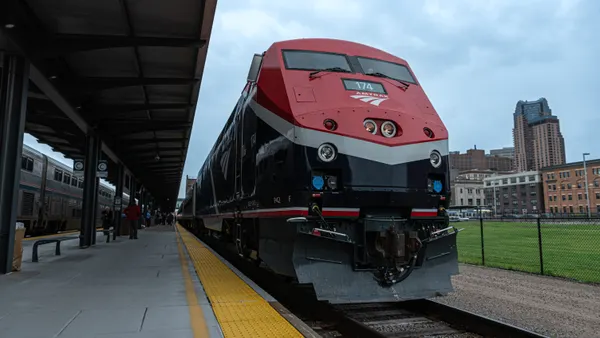UPDATE, July 9, 2018: New York City has named the five companies that will participate in its dockless bike-share pilot, as well as the four areas in which they will operate: Pace and Lime in Rockaways, Queens; Jump and ofo in Central Bronx/Fordham; Jump and Lime in North Shore of Staten Island; and Motivate in Coney Island, Brooklyn, with the possibility of adding another operator there at a later date. All of the individual pilots are scheduled to roll out this month, except for the Coney Island project. That one will launch later this year due to summer construction and concerns about crowds.
Each pilot will have at least 200 bikes that are required to remain within the drawn boundaries. They will be standard dockless bikes, except for some from Jump and Lime which will be pedal-assist.
The city's Department of Transportation (DOT) will monitor the program, especially each company's compliance with requirements for data accessibility, user privacy, safety and bike availability. DOT will use the trial period to determine future steps, such as expanding the pilot program or launching in new areas of the city.
Dive Brief:
- New York City Mayor Bill de Blasio announced that the first dockless bike-share pilot programs will launch this summer.
- Pilots will launch in boroughs outside of Manhattan, starting with Brooklyn and Queens in July and the Bronx and Staten Island later in the summer.
- The city's Department of Transportation (DOT) will oversee the programs. By next month, DOT will finalize the pilot program's boundaries and determine which dockless bike-share companies will be allowed to operate in each area. Twelve dockless companies have applied to participate.
Dive Insight:
New York has been a holdout on the dockless bike-share front. Last year Spin tried launching there and was issued a cease and desist order by the mayor's office. While some point to space constraints as a possible factor for the delayed arrival of dockless bike-sharing, others note the elephant in the room: competition for New York's well-established Citi Bike program.
The press release about the new dockless pilots states that New York "will continue to support and strengthen Citi Bike, which has had nearly 60 million trips since its 2013 launch." As such, all of the new dockless programs must operate completely outside of the Citi Bike areas in Manhattan, Brooklyn and Queens to avoid "duplicating or undermining current bike share service."
Exclusivity agreements like New York's with Citi Bike have created headaches for several cities attempting to modernize their bike-share systems. San Francisco and San Diego also faced exclusivity challenges, although San Diego did ultimately move forward with allowing dockless systems earlier this year. The city may take heart from Washington, DC, which extended its dockless bike-share pilot earlier this year and has seen continued strong ridership on its Capital Bikeshare scheme in addition to the bikes from dockless companies.
Although the New York boroughs where the dockless pilots will launch were hand-picked to avoid competing with Citi Bike, they haven't officially had any bike-share services yet and will now have a new mobility option. The pilot zones will be quite small — capped at about 200 bikes — so they will operate more like community programs rather than large-scale citywide programs.
Because of the small scale of the isolated pilots, city leaders might have difficulty determining widespread dockless success. Many bike-share systems operate most effectively based on networking, as evidenced by the 16 Boston suburbs that collaborated to create a program. But forcing programs to remain within drawn-up borders restricts that networking. It's also unclear how exactly city leaders plan to ensure the dockless bikes remain within each pilot's designated areas and that users don't, for example, ride the bikes into Manhattan or other areas where the services are forbidden.












